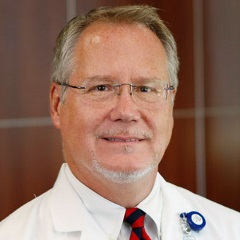Gallbladder Attacks Very Common Around Seasons of Large Social Gatherings
Rich foods, larger portions all play role in increased incidences
 DAYTON, Ohio (March 23, 2018) – A local surgeon says weight gain isn’t the only downside of big social events where many tend to over-indulge in rich foods high in fat. It’s also the perfect setting in which an increase of gallbladder attacks often occurs.
DAYTON, Ohio (March 23, 2018) – A local surgeon says weight gain isn’t the only downside of big social events where many tend to over-indulge in rich foods high in fat. It’s also the perfect setting in which an increase of gallbladder attacks often occurs.
“The weekend after Thanksgiving is notorious for a time in which we see an increase in gallbladder attacks,” said Steven Sutherin, MD, FACS, a general surgeon with Miami Valley Surgery Associates. “We tend to see patients in the emergency room that weekend for gallbladder attacks more than any other part of the year. But it can occur during any social gathering where people tend to each lots of rich food higher in fat.”
The gallbladder is one of the body’s digestive organs that serves as a depot for bile. Bile is a liquid created by the liver that travels down into the intestines and helps digest foods, particularly those that are high in fat. Since the body doesn’t require bile 24 hours a day, it is stored in the gallbladder until it is needed.
A gallbladder attack is when the liquid in the gallbladder crystalizes to a consistency similar to sugar candy or into small stones that act as a barrier to the exit door of the organ. An attack occurs when the liquid is unable to exit the organ.
“The gallbladder is like a water balloon that receives a signal every time the body takes in food,” Dr. Sutherin said. “This signal comes from the stomach telling the gallbladder that it’s time to release more bile, but if there is a blockage, the bile can’t come out. The gallbladder doesn’t know there’s a blockage and will continue to squeeze harder and harder which in turn creates a gallbladder attack.”
Initially, a gallbladder attack will feel much like indigestion or as if a bad meal has been eaten, he said. The feeling, which usually occurs in the center of the stomach, can begin anywhere from 30 to 60 minutes after a meal. During that time, the pain may travel from the stomach to the upper abdomen and, at times, may radiate through the back and into the shoulder blade.
Pain isn’t the only symptom of a gallbladder attack. A person may experience nausea, and in serious cases, vomiting for up to six hours after food has been eaten. Individuals who experience symptoms beyond eight hours usually end up in the emergency room, said Dr. Sutherin, who practices with Premier Physician Network.
Consider the following points of action to avoid suffering from a gallbladder attack or to reduce your risk of experiencing another one:
Face the fats – Anything in the stomach can signal the gallbladder to squeeze, including a simple glass of water. However, foods higher in fat will make it squeeze harder. Any food that is greasy in appearance may be a good sign that it is high in fat. This would include fried foods or others such as pizza.
Journal it– Consider keeping a food journal if you have already experienced gallbladder attacks in the past. This can help identify which foods are triggers for you as well as the symptoms you feel. You can then modify your eating and possibly reduce your risk for experiencing attacks in the future.
Redefine the holidays – Look for ways to enjoy holidays and family gatherings without the presence of high-fat foods. Resolve to take a healthy option, and when faced with a variety of options at a party use self-control to place low-fat foods on your plate.
“Gallbladder attacks are what we call the great imitator,” he said. “There are lots of things that can mimic gallbladder attacks including heart conditions, hepatitis and stomach ulcers. It’s extremely important to talk to a health care professional about your symptoms, and let tests confirm the diagnosis.”
Contact Us
Discover more about Premier Health and join us in building healthier communities in Southwest Ohio. Learn more about working at Premier Health, becoming a volunteer, and making a gift to support our mission.

